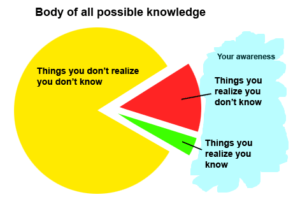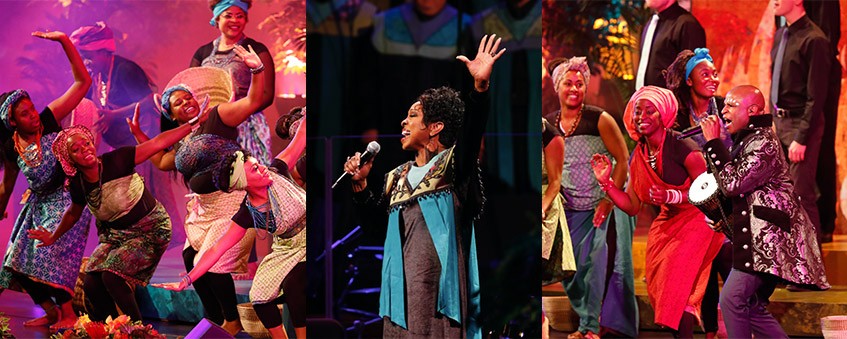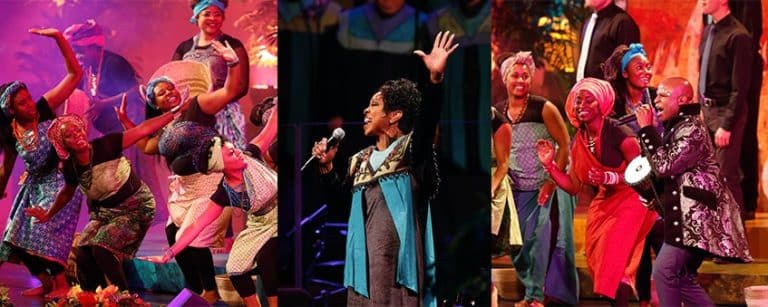This lesson plan could also be used to teach Come Follow Me: The Articles of Faith and Official Declarations 1 and 2 “We Believe”
Overcoming Racism, Starting Within Our Own Latter-day Saint Culture
Last week, the Come Follow Me weekly reading assignment for members of the Church of Jesus Christ of Latter-day Saints (LDS) was the sermon of Alma in Alma 5-7. It is one of the most introspective sermons in our cannon, inviting us to ask ourselves probing questions that seem particularly important now, in light of current events that have brought renewed awareness to the problem of racism in American society:
And now behold, I ask of you, my [sisters and] brethren of the church, have ye spiritually been born of God? Have ye received his image in your countenances? Have ye experienced this mighty change in your hearts?
…I say unto you, can ye look up to God at that day with a pure heart and clean hands? I say unto you, can you look up, having the image of God engraven upon your countenances?
…And again I say unto you, is there one among you that doth make a mock of his brother [or sister], or that heapeth upon him [or her] persecutions?
-Alma 5:14, 19, 30
When my local Sunday School class discussed these questions (via Zoom, due to ongoing COVID-19 quarantines), many of us talked about the recent episodes of police brutality and racism afflicting our black brothers and sisters, and wondered aloud how we could do our part to change our hearts, clean our hands, and alleviate the persecutions of communities afflicted by systemic racism.
I also wondered, when we imagine ourselves engraving the image of God in our countenances, are we picturing a white man? How does our own church culture make us complicit?
After Sunday School, I decided to focus my Family Home Evening on racism, with a particular emphasis on how racism permeates our own culture as LDS church members. I am sharing my lesson plan here. While my family used this lesson for Family Home Evening, it could be adapted to a church setting for a Relief Society, Young Women or Priesthood class.
Healing the Wounds of Racism
In the article, Healing the Wounds of Racism, Darius Gray, a founding member and former president of Genesis, an LDS Church-sponsored group that serves the needs of African-American church members, listed four steps we should follow:
1. Acknowledge the Problem
…We cannot fix that which we overlook or deny. Our attitudes toward others of a different race or of a different culture should not be considered a minor matter. Viewing them as such only affirms a willingness to stay unchanged…
2. Recognize It in Ourselves
Some people acknowledge the problem but may not recognize it in themselves. Sometimes racism is so subtle, we may not realize we’re expressing it…
3. Learn a New Approach
4. Listen
…We are a community of talkers. We talk about ourselves, our historical families, our children, and often our faith. And while all of that is a form of sharing, it would be beneficial if we became a community of listeners. If we first endeavored to truly hear from those we consider as “the other,” and if our honest focus was to let them share of their lives, their histories, their families, their hopes, and their pains, not only would we gain a greater understanding, but this practice would go a long way toward healing the wounds of racism.
– Darius Gray, Healing the Wounds of Racism
Bias
We all have biases, which is part of the reason following Bro. Gray’s counsel to recognize the problem in ourselves is so important. If we don’t do the hard work of looking for bias within our own hearts, we cannot affirmatively answer Alma’s question, “Have ye experienced this mighty change in your hearts?”
The apostle Paul described the limitations of our own, human perspectives this way:
For now we see through a glass, darkly; but then face to face: now I know in part; but then shall I know even as also I am known.
-1 Corinthians 13:12
How are we known by the Lord? How does the Lord’s perspective differ from ours? Consider what the Lord told the Biblical prophet Samuel:
But the Lord said unto Samuel, Look not on his countenance, or on the height of his stature…for the Lord seeth not as man seeth; for man looketh on the outward appearance, but the Lord looketh on the heart.
-1 Samuel 16:7
Note that Samuel was not a bad person, and yet, he had biases, like we all do. We should not assume that biases are only found among bad people. This belief prevents us from recognizing our own biases.

Paul’s observation that we “know in part” is often described this way in modern vernacular:
- What we know
- What we don’t know
- What we don’t know we don’t know
For example, I know that my home appliances are operated by electricity. I know that I don’t know how to repair an electric appliance, so I wisely seek help from an electrician for those services. The part that I don’t know that I don’t know is the most dangerous. Once, I didn’t know that I didn’t know that an electric appliance in my household had broken and so I tried to turn it on and shocked myself.
This is where Bro. Gray’s counsel to listen becomes so important. For those of us from privileged racial backgrounds, there will be many things we don’t know about the racism others experience unless we listen to them.
Our own biases often fall into the “unknown unknowns” category. Others may see us act in ways that reveal biases we didn’t know that we had. This can be hard to hear, especially when we are trying to be good allies, but our awareness and capacity to confront racism will grow as we listen when people tell us the things we didn’t know we didn’t know. (I will confess here that I internally debated whether to share my FHE lesson on this website, because it is highly likely that an alert reader will notice that I said something wrong, and I don’t know which thing it was that was wrong. This is hard for me.)
Systemic Racism
To fight racism, introspection is not enough. We must disband systemic racism, which requires changing policies and rectifying decades-old wrongs. Systemic racism is an unlevel playing field that permeates society.
“Systemic racism”, or “institutional racism”, refers to how ideas of white superiority are captured in everyday thinking at a systems level: taking in the big picture of how society operates, rather than looking at one-on-one interactions. These systems can include laws and regulations, but also unquestioned social systems.
-Mary Frances O’Dawd, Explainer: what is systemic racism and institutional racism?
In Time magazine, Justin Worland listed several examples of systemic racism in the United States of America:
Systemic racism also found its way, more insidiously, into the institutions many Americans revere and seek to safe-guard. Established in the 1930s, Social Security helped ensure a stable old age for most Americans, but it initially excluded domestic and agricultural workers, leaving behind two-thirds of black Americans. Federal mortgage lending programs helped white Americans buy homes after World War II, but black Americans suffered from a shameful catch-22. Federal policy said that the very presence of a black resident in a neighborhood reduced the value of the homes there, effectively prohibiting African-American residents from borrowing money to buy a home. And sentencing laws of the past several decades meant that poor black Americans were thrown in prison for decades-long terms for consuming one type of cocaine while their wealthier white counterparts got a slap on the wrist for consuming another.
There’s a straight line between these policies and the state of black America today. The lack of Social Security kept black Americans toiling in old age or forced them to the streets. The obstruction of black homeownership, among other factors, has left African Americans poorer and more economically vulnerable, with the average black household worth $17,000 in 2016 while the average white household was worth 10 times that. “Tough on crime” sentencing policies have ballooned the black prison population, torn apart families and left millions of children to grow up in single-parent homes.
-Justin Worland, America’s Long Overdue Awakening to Systemic Racism
Systemic Racism within the LDS Church
While I was serving as a missionary in the Dominican Republic, my mission president held a meeting for American missionaries to address racism he had noticed among American missionaries toward our Dominican peers. He gave us an introductory lesson on privilege by describing his own. Yes, he had worked hard to educate himself and build a profitable business, but those opportunities had only been available to him because of the circumstances of his birth; he was born to a privileged race, in a wealthy country, with access to free, high quality education and numerous job opportunities.
In the context of the LDS church, my Dominican peers were disadvantaged in additional ways. As missionaries, they were operating within a system based on and catering to American culture, not their own, and had few if any of their own countrymen represented in church leadership. Nearly all of them were first generation members of the church. Their ancestors never had the opportunity to join the LDS Church because the Dominican Republic was one of several countries with a predominantly black population which the LDS Church excluded from missionary efforts until 1978. From 1852 until 1978, the LDS Church banned people of black African descent from holding the priesthood or attending the temple. The end to this discriminatory policy is documented in Official Declaration 2 in Doctrine and Covenants.
During Joseph Smith’s lifetime, a few black male members of the Church were ordained to the priesthood. Early in its history, Church leaders stopped conferring the priesthood on black males of African descent. Church records offer no clear insights into the origins of this practice. Church leaders believed that a revelation from God was needed to alter this practice and prayerfully sought guidance. The revelation came to Church President Spencer W. Kimball and was affirmed to other Church leaders in the Salt Lake Temple on June 1, 1978. The revelation removed all restrictions with regard to race that once applied to the priesthood.
Heading, Doctrine and Covenants Official Declaration 2
LDS scriptures teach that racism does not come from the Lord:
For none of these iniquities come of the Lord; for he doeth that which is good among the children of men; and he doeth nothing save it be plain unto the children of men; and he inviteth them all to come unto him and partake of his goodness; and he denieth none that come unto him, black and white, bond and free, male and female; and he remembereth the heathen; and all are alike unto God, both Jew and Gentile.
-2 Nephi 26:33
However, paradoxically, our scriptures also reflect the biases of the men who wrote them, including their racist sentiments. The prophet Nephi admitted that the spiritual power of his words were limited by his own weaknesses (2 Nephi 4:14-35, 33:1-4). Likewise, there are many examples of racist teachings by modern LDS church leaders. In 2013, the LDS Church made the following statement:
Today, the Church disavows the theories advanced in the past that black skin is a sign of divine disfavor or curse, or that it reflects unrighteous actions in a premortal life; that mixed-race marriages are a sin; or that blacks or people of any other race or ethnicity are inferior in any way to anyone else. Church leaders today unequivocally condemn all racism, past and present, in any form.
Modern LDS church members cannot complacently assume that racism is only a relic of our past. Unlearning decades of racism requires constant vigilance. Our church today remains predominantly white because racist policies and teachings excluded people of color for so long, and this lack of diversity makes change all the more difficult because the people we need to listen to are often missing, especially within the leadership positions that continue to define policy and doctrine.
My family concluded Family Home Evening by rewatching the Be One Celebration. As the title implies, the tone of this video is celebratory and hopeful, with a focus on the joy that comes from ending racist policies more than the pain they cause while in place. But it does acknowledge the problem in ways that I have not seen many other church-sponsored media do.
 Gladys Knight, Alex Boyé and other Latter-day Saint performers at the Be One Celebration on June 1, 2018. Photos by Christina Smith.
Gladys Knight, Alex Boyé and other Latter-day Saint performers at the Be One Celebration on June 1, 2018. Photos by Christina Smith.
The Be One Celebration was presented and broadcast by the LDS Church in 2018, commemorating 40 years since the LDS Church revoked racist policies barring people of African descent from holding the priesthood or attending the temple. The video also touches on other racist policies, such as refusing to send missionaries or build churches in predominantly black countries.
For Family Home Evening, we started at Time Stamp 24:00 of the video, which is when the musical production begins (after the introductions and speeches that proceed it) and watched through to the end (about 1 hour).
If you share this video in a church classroom setting, you will not have time for the whole show. I recommend watching the 15-minute section between Time Stamps 35:40-50:20. This section of the video discusses black Latter-day Saint history, highlighting the stories of notable black Latter-day Saints, including both their important contributions to the LDS Church and the discrimination they faced as a result of racism within the LDS Church.
https://youtu.be/52-y98r2ZYs?t=1443
This lesson plan was originally written in 2020 as Overcoming Racism, Starting Within Our Own Latter-day Saint Culture.






3 Responses
thank you for putting this together!
Thank you for sharing. I’ve bookmarked this page for our lesson this week. I think that you’ve addressed this issue in a very thoughtful way.
Thanks for this context and plan!